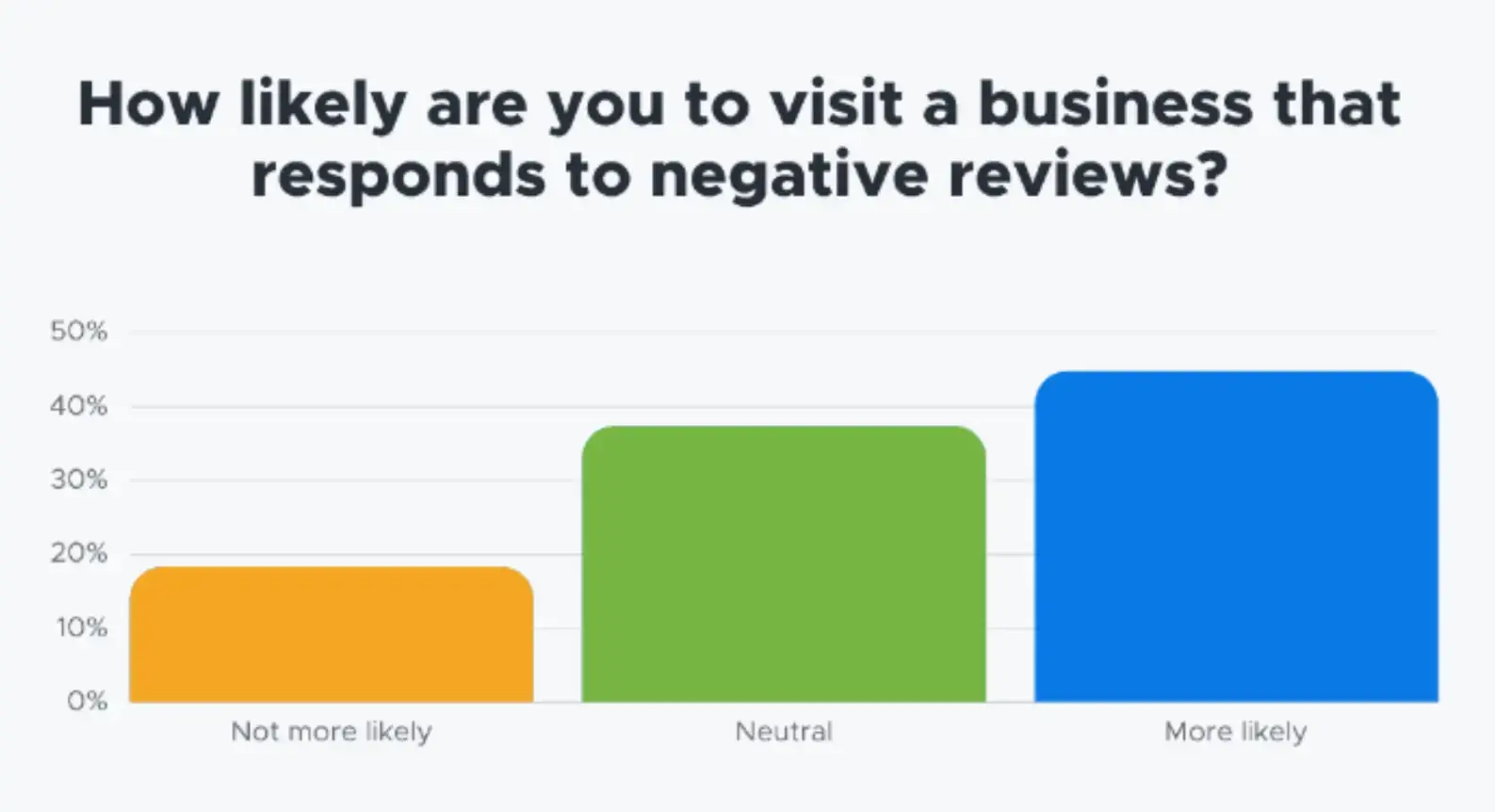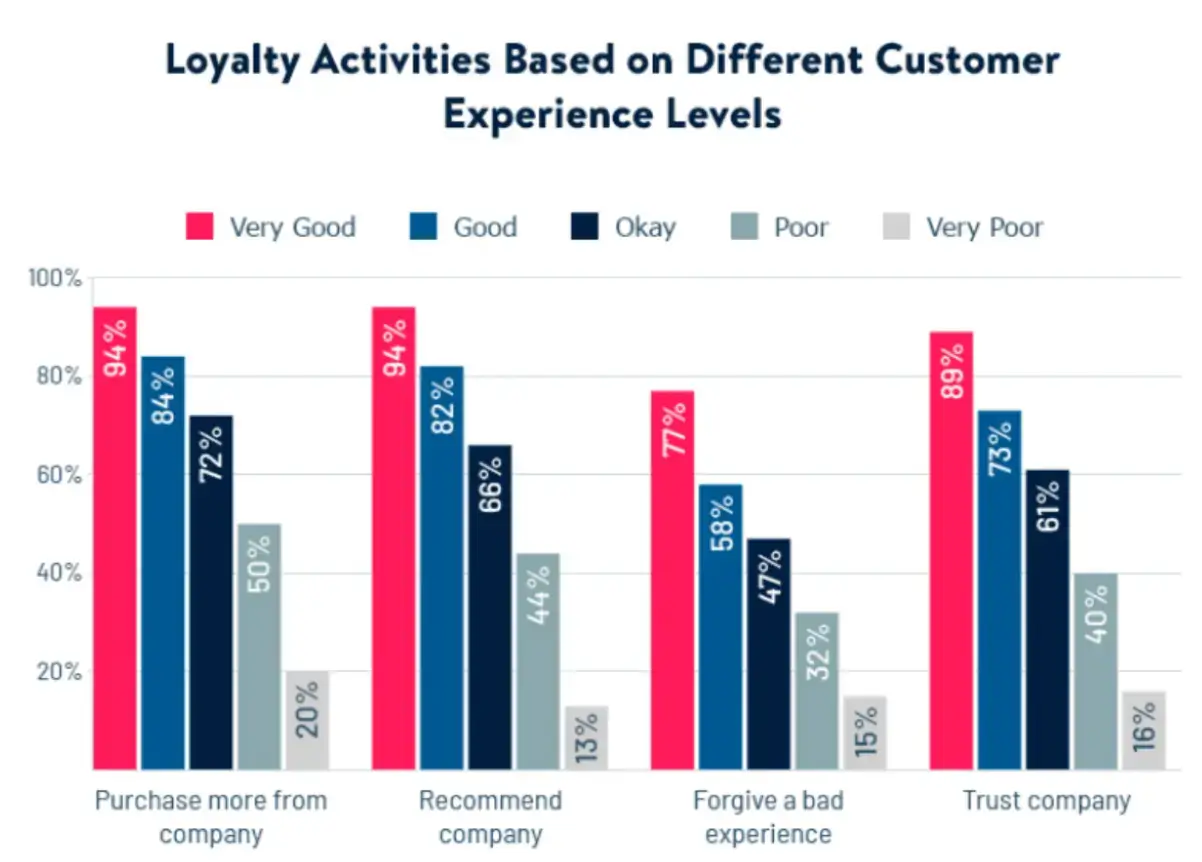Leveraging social proof is one of the most effective ways to generate more traction. Showcasing the positive experiences of your customers helps you engage your target audience and generate quality leads for the sales funnel.
The problem is that people are generally less assertive about their positive experiences and more vocal when it comes to sharing negative reviews.
Your customers’ unpleasant remarks about the solutions you offer can severely affect your reputation online and influence your audience’s sentiments.
Article Shortcuts:
So, it’s best not to sweep negative feedback under the rug and to make your customers’ concerns a high priority.
It gets you a chance to redeem yourself and make things right with your dissatisfied customers. You can transform them into your brand advocates by listening to what they have to say and solving their problems.
How Important is Customer Feedback?
Customer feedback and how you respond to it is very important and will have a direct impact on your long-term success as a growing business.
Your openness to the problems identified by your customers and your quickness in resolving their concerns pave the way for you to cultivate loyalty and ensure lasting customer relationships.
Continuous improvement is the key to dominating the competitive landscape and outmaneuvering other alternatives in your respective industry.
But to be the best at what you do, you need to identify the problems with the solutions you offer and come up with viable fixes.
The feedback you receive from your customers helps you identify the issues that have the most impact on their satisfaction level. As a result, you leverage your resources to their fullest and prioritize solving the most critical problems.
It helps you make things right with your customers and likely transform them into your brand ambassadors.
Around 97% of people say that reviews have a significant impact on their buying habits. Converting your troubled customers into brand ambassadors is a huge feat, which fuels your social proof and enables you to generate more traction.
8 Tips for Creating Positive Experiences from Negative Feedback
1. Invest in customer service
Customer service plays a huge role in turning your customers’ negative feedback into a positive experience.
You’re the preferred point of contact for your customers when they come across problems with the solutions you offer. They prefer reaching out to you and asking you to resolve their concerns rather than sharing negative reviews.
So, to ensure lasting relationships with your customers, you must invest in training your representatives and improving your customer service. Furthermore, you should allow your customers to seek support via different channels.

Source: Truelist
Make sure that your representatives are familiar with your processes and have a uniform tone when interacting with your customers.
Furthermore, your support team should be quick to respond to your customers’ queries, as you may lose 79% of your customers due to unresponsiveness.
They should be skilled in handling critical situations and trained to maintain their composure during unpleasant conversations.
They should be familiar with the latest customer support best practices and skilled at pacifying dissatisfied customers. It earns you a second chance at making things right with your customers and regaining their trust.
2. Acknowledge your mistakes
Turning the negative feedback of your customers into a positive experience starts with acceptance. In order to devise viable solutions, you need to accept that there’s a problem.
A common mistake many businesses make is simply ignoring the negative feedback they receive from their customers, which often leads to their downfall.

Source: Reviewtrackers
Negative remarks from your customers may be alarming and have a devastating impact on your brand image. However, at the same time, the feedback you receive from them enables you to ensure continuous improvement.
Your customers could have simply discontinued using your products or services and switched to other alternatives in your respective industry. Instead, they shared their concerns with you.
With this information, you can make necessary improvements to the solutions you offer and stay ahead of the curve.
3. Apologize for the inconvenience
Once you have acknowledged feedback from your customers, apologize for the inconvenience caused and thank them for sharing their concerns with you.
A little empathy goes a long way and helps you make things right with your customers.
It’s likely for you to come across feedback that’s not completely accurate. You may feel that the customer is just being unfair and making things huge.
Even in such instances, you have to maintain your composure and cater to the feedback shared by your customers with humility.
Try assessing the situation with an open mind and a neutral perspective. Your customers have paid for your products or services. So, their unpleasant reaction is justified, even if it’s due to a minor inconvenience.
A lot of them may not even be able to leverage your products or services to the fullest. The capabilities that they seek may already be there. They are just unable to discover them. In this case, it’s your responsibility to educate your customers.
However, if their concerns are legitimate, you should understand their frustration and apologize for an unpleasant experience.
4. Identify the problems
To offer a seamless experience, you should carefully assess your customers’ feedback and identify the problems that require your attention.
Different things may contribute to a poor customer experience. It may severely affect your reputation and cause you to lose your customers for good.

Source: 5minutesSEO
When providing you with their feedback, your customers may pinpoint multiple concerns. However, catering to them all at once may be overwhelming for you.
So, it’s best to identify and solve the problems that have the most impact on the experience you offer to your customers. In other words, you should prioritize improving the essential features or functionalities of your products or services.
5. Fix the problem
It goes without saying that once you’ve identified the most readily highlighted and important concerns, you need to come up with a well-thought-out plan to fix the problems.
The goal here is not just to improve the functionalities of the solutions you offer but also to eliminate the root cause to prevent such occurrences in the future.
You need to have an open mind to come up with viable fixes. It may require you to conduct a thorough assessment of the solutions you offer, your processes, and your policies.
Your priority shouldn’t be a temporary fix but finding a permanent solution to the problem. It greatly increases the chances of your customers being satisfied with the potential changes.
6. Inform your customers
As said earlier, it’s not feasible for you to fix all problems at once. You will likely identify the most critical concerns and come up with a timeline to implement the developmental changes.
As the issues get fixed, it’s your responsibility to reach out to the respective customers and inform them.
The best strategy here is to share announcements from time to time through relevant social media platforms readily preferred by your target audience.
You should also consider reaching out to your customers directly who shared their concerns with you by leveraging customer service. You can notify them about the changes via phone or email.
Keeping your customers informed about the changes cultivates loyalty and turns the negative experiences of your customers into positive ones. You’re telling them that you’ve listened to their feedback and taken the necessary steps to make improvements, which makes them feel valued.

Source: 99firms
They’ll not only likely prefer you over other alternatives in the industry but also recommend your solutions to others in their social circle.
7. Follow up
Once you’ve fixed the problems and made improvements to the solutions you offer, follow up with your customers and ask them to share their latest experiences with you.
The best way to do this effortlessly is by conducting a customer survey. However, you can also follow up through a call or an email.
The goal here is to ensure that the changes made to the products or services meet the expectations of your customers.
Plus, having a well-thought-out customer feedback strategy for following up on the experiences of your customer base shows that you care and commit to fulfilling your promises.
Following up with your customers helps you know if your deployed strategies are paying off and helping you improve customer experience.
8. Ensure continuous improvement
The next thing you need to consider is learning from the mistakes you made in the past. Let the feedback from your customers guide you and help you offer more refined solutions in the future.
The goal here is to minimize the likelihood of receiving negative customer reviews in the first place. So, you should carefully analyze the feedback you received in the past and identify the causes of the problems.
Moreover, the needs and preferences of your customers change over time. So, you should keep an eye on the industry insights and monitor the changes in the preferences of the intended audience segment.
Make improvements to your solutions and your processes as per the findings from negative reviews received in the past and your latest research.
Only by improving consistently can you gain an edge in the competitive landscape and ensure positive customer experiences in the long run.
Conclusion
Turning the negative feedback of your customers into a positive experience is an intricate process.
It requires you to listen to your customers with empathy, identify the root causes of the problems, devise viable solutions, and implement the changes.
You need to carefully communicate the changes with your customers and follow up on their concerns in the past. It helps you cultivate trust and foster loyalty in the long run.
You not only get to win your customers back but also get an opportunity to transform them into your brand ambassadors and leverage their positive experiences as social proof to generate more traction.
Author Bio
Syed Balkhi is the founder of WPBeginner, the largest free WordPress resource site. With over 10 years of experience, he’s the leading WordPress expert in the industry. You can learn more about Syed and his portfolio of companies by following him on his social media networks.



